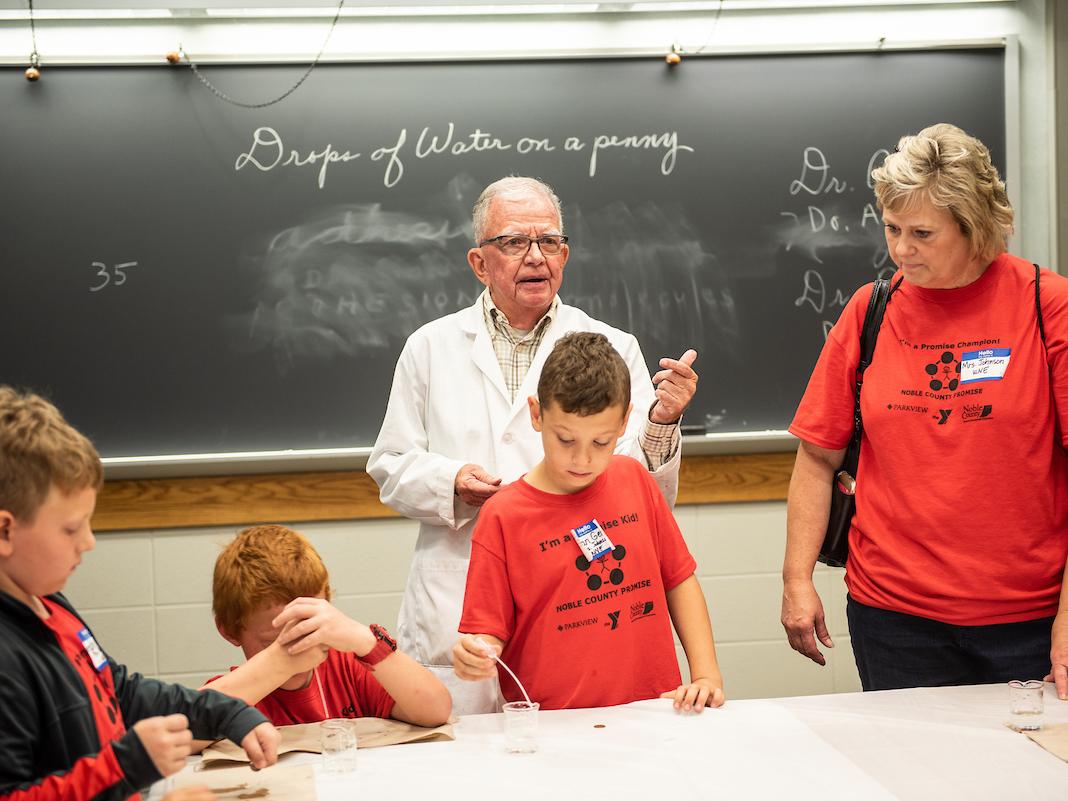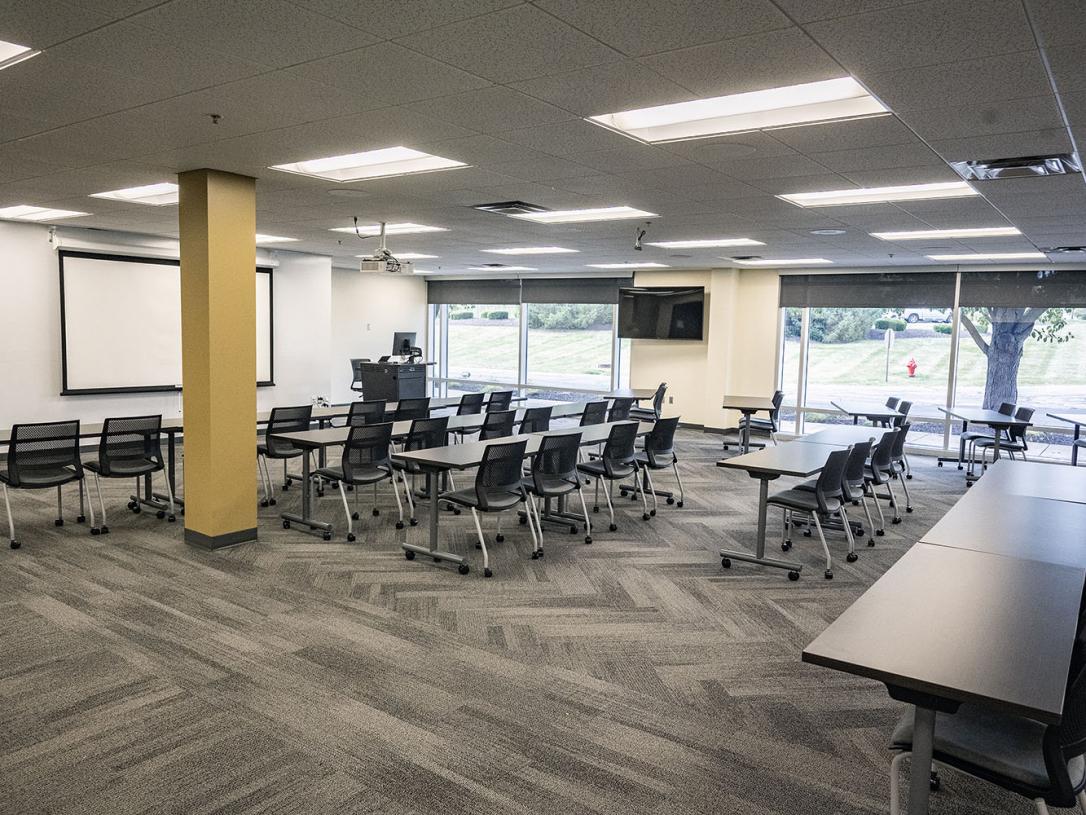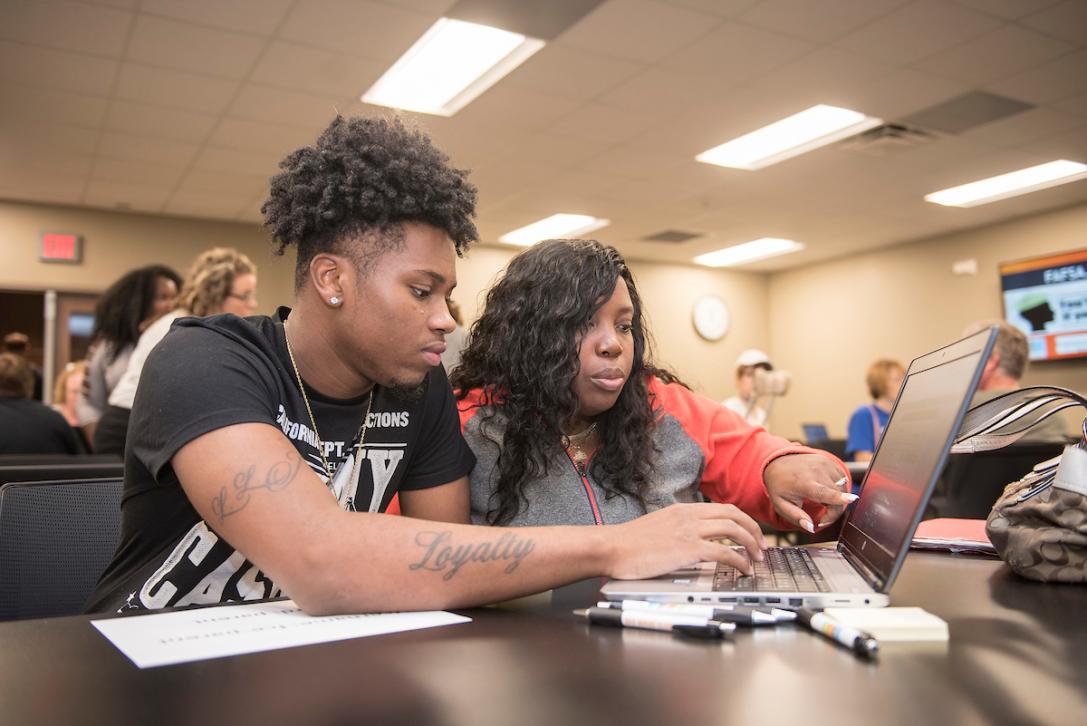
How you support student retention
By Geoff Thomas
February 8, 2024
Looking at the recently completed spring semester enrollment report from the Office of Institutional Research and Analysis, Purdue University Fort Wayne has again seen year-over-year increases in credited hours—undergraduate up .7% and graduate up 2.2%—and overall student retention, which is up 1.5% compared to fall 2022 to spring 2023. According to Irah Modry-Caron, executive director of institutional research and information management, the growing number of international students enrolled at PFW continues to be highly encouraging and well developed.
As many already know, getting students enrolled for the first time is one thing; keeping them enrolled and on track to receive a degree is another. It’s that second, and arguably more significant, objective where strategies set into motion a few years back are starting to make a real difference.
For Kent Johnson, executive director of academic assessment and student success, there’s reason to believe more good news is on the horizon, and there are many ways faculty and staff can play a part.
Read here more of what Johnson had to say:
What’s the biggest takeaway from this spring’s census report?
The university community is working together to improve student experience and success. It demonstrates that our commitments to student academic success, student wellness, and an intentional emphasis on both academic engagement and social engagement lead to improved student outcomes.
Are spring census numbers interpreted differently than fall census numbers?
Our commitment is to a continuous enrollment pattern that leads to supporting students completing their desired credentials in a timely manner. So, in a sense, each semester is critical and builds to the next, all the way through graduation. While it’s understandable that from a reporting perspective the fall census often gets a bit more weight, the spring census is also a critical component.
How have recent changes to the university’s advising approach helped with retention?
The new advising model is a tandem model in which students are assigned both a professional staff advisor and a faculty advisor. This, along with new technology like EAB Navigate, allows us to engage with students in much more effective ways. We are continuing to define the roles for faculty who advise and the roles of our professional advisors to meet the culture of each college and school.
The more frequent and targeted outreach to students has helped us know how to best lend help. For example, do we need to connect them to other areas like financial aid, tutoring, student counseling, etc.? An important next step is answering the question ‘How can we encourage them to become more engaged with Student Life?’ We are working closely with the Career Development Center to get students engaged earlier in connecting their degree to life after graduation. We believe this is critical for our population of students to stay committed to completing their degree.
All of these examples relate to the primary benefit of the advising approach to increase retention. We have developed a “high touch” approach where we demonstrate to students that we care about them and are here to help them achieve their goals for attending PFW.
Finally, and this isn’t something that we all can take responsibility for, our campus is working exceedingly well across divisional lines. The days of misdirected competition and blame have been replaced with healthier attitudes focused on how we can work as one university to improve student success. It’s this collaborative spirit that will further transform the PFW’s retention efforts.
What are some specific ways faculty and staff can become more engaged in these efforts and/or learn more?
There are several ways. First, we are beginning to establish advising strategy teams in each college and school. The purpose of these teams is to connect faculty and advisors to continually improve the effectiveness of the tandem model in supporting student success.
Second, we are expanding access to Navigate. Many staff will be engaged in Care Centers within Navigate and will be able to use the technology tool to communicate with students, advisors, and faculty at both the individual student level and across groups of students who share common characteristics.
Finally, we are working closely with PFW’s System Engineering Group led by David Cochran on multiple student success efforts. Faculty and staff engagement in this work will enhance PFW’s capacity to assure a consistent, equitable experience for all students that increases the likelihood of their success.
What new strategies and/or tools to increase enrollment and retention are on the horizon at PFW?
- Students can “raise their hand” in Navigate when they need help.
- Faculty will be able to issue ad hoc alerts, which are directed to professional advisors to help connect students with important services and resources.
- We will be adding some automations in Navigate to quickly get students the information they need.
- We are continuing to integrate our Bot with Navigate to better understand and respond to student needs.
- We are looking at how to expand and share some of the excellent student success efforts that our various student advising and success centers are doing across the whole university.




